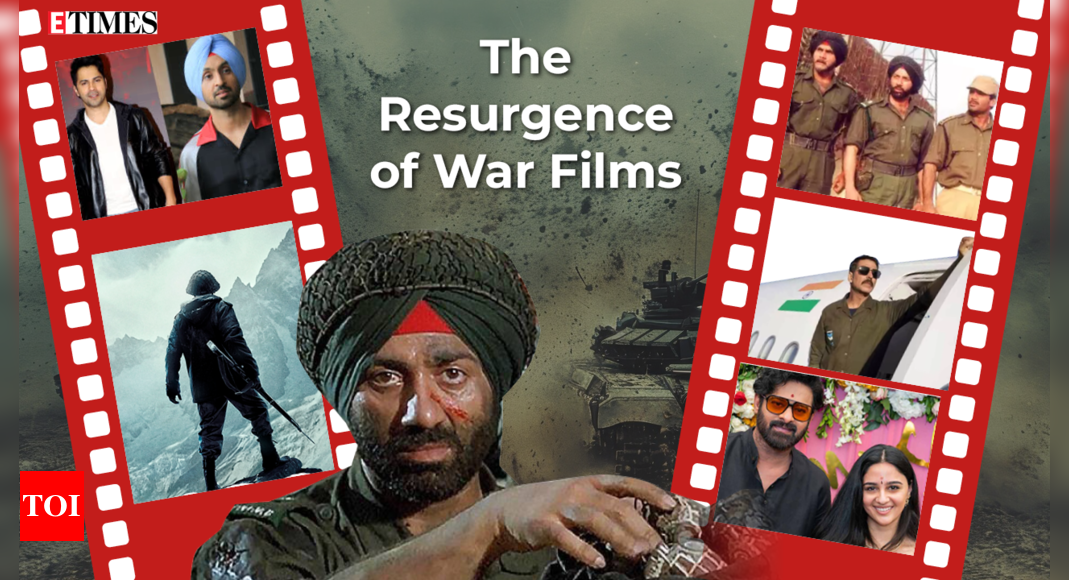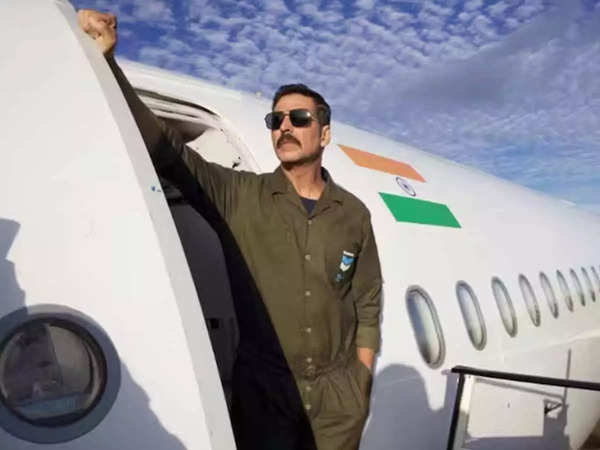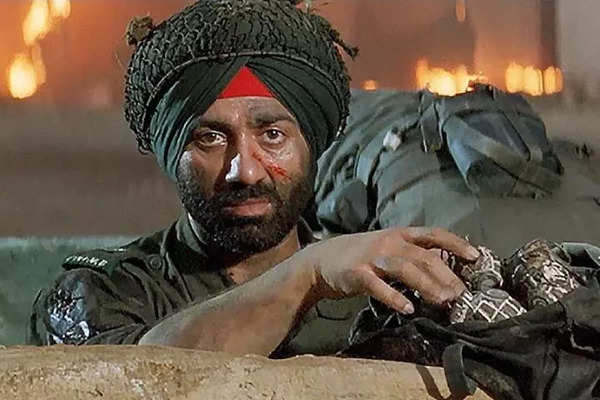
The Emotional and Nationalistic Core of War Films
At their heart, war films often serve as vehicles for nationalist sentiment, offering an opportunity to reflect on the sacrifices made by the armed forces. However, what’s intriguing about the current wave of films, is how they explore not only the valor, but also the complex realities of war. They show the human side of soldiers, emphasizing their relationships, their struggles, and their internal conflicts, making the characters more relatable and the films more engaging.
Border 2, for instance, serves as a direct sequel to the 1997 hit Border, which chronicled the Battle of Longewala during the 1971 Indo-Pakistan war. The original film tapped into raw emotions of patriotism, loss, and camaraderie, which resonated deeply with Indian audiences. Now, with Border 2, the expectation is to rekindle that patriotic fervor while also bringing fresh perspectives. In a world where global political tensions are more complex and information is widely accessible, the narrative in Border 2 might delve deeper into the psyche of soldiers, possibly addressing the changing nature of warfare in the 21st century. The film brings back Sunny Deol in the iconic film with new additions like Varun Dhawan and Diljit Dosanjh.
Similarly, Sky Force, starring Akshay Kumar has its roots in the 1965 Indo-Pakistan war, and also tells the story of India’s first and only posthumous winner of the Param Vir Chakra. The film is rooted in the valor of the Indian Air Force, with a specific focus on high-octane aerial combat sequences. War films, traditionally, have focused on ground battles, but Sky Force provides a new dimension by highlighting the strategic importance of air superiority. This shift in focus from infantry battles to the skies, mirrors the evolving nature of modern warfare. It also taps into a largely unexplored aspect of Indian war history, offering a fresh narrative canvas.
The Changing Face of War Narratives
Another film set to make waves is Fauji, led by Prabhas, however, unlike the other examples, this one is a fictional tale. This film marks another intriguing shift in how Bollywood tackles war stories, especially in regional cinema. The film is being directed by Hanu Raghavpudi, who last directed Dulquer Salmaan and Mrunal Thakur in Sita Ramam, a love story between an Indian Army Captain and a princess, set against the background of Operation Gibraltar.
War films humanize soldiers, and reflect a broader cultural shift. In today’s world, where news of conflicts and their devastating impacts is accessible in real-time, audiences want more than just action sequences and flag-waving. They crave stories that show the trauma, sacrifices, and emotional costs of war. This shift has led filmmakers to construct characters that aren’t just heroes, but people with vulnerabilities and complex motivations.
For instance, 120 Bahadur, produced by Farhan Akhtar, appears to further this narrative of honoring bravery while reflecting on the human cost of conflict. The film is based on the Battle of Rezang La which was fought during the Indo-China War of 1962. Rezang La shone as a beacon of valor for India during the 1962 Indo-China conflict, the battle tells the story of 120 Indian soldiers of Charlie Company 13 Kumaon, led by Major Shaitan Singh. They took on nearly 3000 Chinese soldiers, wherein over 1300 Chinese soldiers passed while 110 Indian soldiers attained martyrdom. Farhan himself has directed a film with the 1999 Kargil War as a backdrop, called Lakshya, which had Hrithik Roshan and Preity Zinta in lead roles.
Talking about the rise of war film exhibitor Akkshaye Rathie said , ” While the genre lends itself o a fantastic theatrical experience success. The reason that war films are made is they tend to have action and scale and an element of emotion behind it is attached, whether it’s patriotism, whether it’s revenge or bravery. And action films work well when there are emotions attached to them. Like Akshay Kumar’s Kesari, the emotion of bravery is attached so strongly that it went on to become one of his biggest grossers, the same was the case with Border or Uri- The Surgical Strike. So this mixture of these two elements, action and scale and solid emotion, is absolutely lethal and can capture audiences imagination in a huge way. Also, if you look at the history of India, modern or ancient, so many wars have been fought on our land and there are many stories waiting to be told. Like Farhan Akhtar’s next 120 Bahadur where he plays Major Shaitaan Singh is one of the legends from the Indian armed forces, a Param Vir Chakra award winner. With him there are so many uncelebrated heroes who deserve more recognition.”

War as a Backdrop: Expanding the Definition
Interestingly, recent films aren’t always centered around war itself, but used as a backdrop to tell intimate, human stories. Sam Bahadur, for instance, while focused on the life of Sam Manekshaw played by Vicky Kaushal, one of India’s most celebrated military leaders, also explores one of the biggest high points of his professional career – the 1971 India-Pakistan war which led to creation of Bangladesh. The film captures a critical moment in Indian military history but does so through the lens of a single man’s life.
Similarly, the upcoming Love and War by Sanjay Leela Bhansali, with Ranbir Kapoor, Alia Bhatt and Vicky Kaushal promises to weave a romantic narrative into the backdrop of war. By placing human emotions—specifically love—amidst the chaos of conflict, the film is poised to offer a unique perspective. In this sense, Love and War reflects a broader trend in Bollywood, where films are increasingly blending genres, using war as a canvas to explore themes of love, loyalty, and sacrifice. This evolution is significant, as it represents a more nuanced approach to storytelling within the war genre, offering audiences layered narratives that engage on multiple levels.The film is said to be a modern adaptation of Raj Kapoor’s Sangam.
Why Are War Films on the Rise?

Several factors contribute to the resurgence of war films in Indian cinema. One reason is the increasing interest in real-life stories and historical events. Audiences are drawn to films that reflect real struggles, and provide insight into pivotal moments in the nation’s history. With the success of biopics and historical dramas in Bollywood, it’s no surprise that war films, often rooted in true events, are finding renewed popularity.
Another contributing factor is the rise of nationalism, which has permeated the socio-political landscape in recent years. War films often serve as a reflection of national pride and unity, offering narratives that resonate with audiences in a deeply emotional and patriotic way. In an era where questions of national security, territorial disputes, and defense capabilities dominate the news, war films provide a cultural outlet for these anxieties and aspirations.
Moreover, technological advancements in filmmaking have made it possible to create more realistic and immersive battle sequences. The use of visual effects, CGI, and sophisticated camera work has allowed filmmakers to craft war scenes that are both spectacular and authentic. Audiences now expect high-quality production values, and these films are meeting those expectations with grand visuals and meticulous attention to detail.
Trade Expert Atul Mohan shares ” It is not that all war films work , one needs to get the right emotion. Also a lot of our war films are our battles against Pakistan and the audiences love to see the neighboring country lose.”
Conclusion: A Reflection of a Nation’s Psyche
The rise of war films in Bollywood reflects not only a fascination with the genre, but also a deeper cultural phenomenon. As India grapples with its past, present, and future, these films offer a medium through which audiences can explore issues of national identity, patriotism, and sacrifice. Whether through the lens of aerial dogfights in Sky Force, the personal struggles of soldiers in Fauji, or the blend of romance and conflict in Love and War, war films are finding new ways to tell old stories—making them relevant for today’s audiences while honoring the heroes of yesterday. This resurgence signals a deeper connection between cinema and society, where stories of bravery and sacrifice continue to captivate and inspire.





